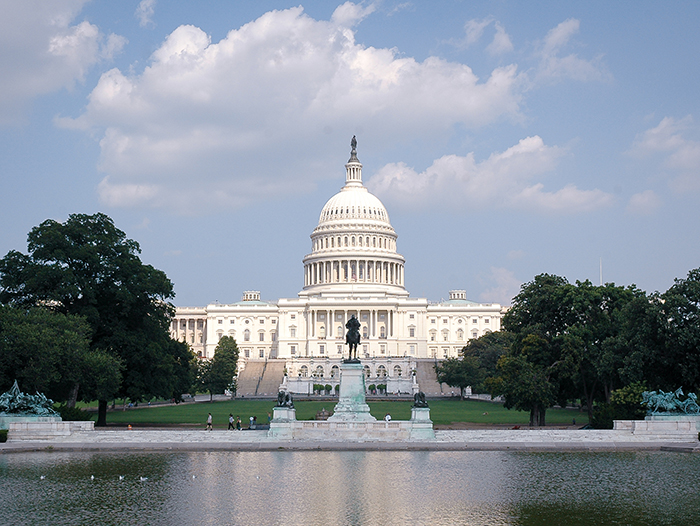According to a new report from HHS' Office of Inspector General (OIG), there is still a "notable level" of hospital noncompliance with federal price transparency requirements even three years after they first went into effect — something OIG said is due to inadequate oversight from regulators.
Background
In 2021, CMS began enforcing a federal price transparency rule that requires hospitals to virtually post "a machine-readable file … that includes all standard charges (including gross charges, discounted cash prices, payer-specific negotiated charges, and de-identified minimum and maximum negotiated charges) for all hospital items and services."
Under the rule, hospitals are also required to publicly post "discounted cash prices, payer-specific negotiated charges, and de-identified minimum and maximum negotiated charges for at least 300 'shoppable' services."
Since then, CMS added additional requirements to the price transparency regulations. As of Jan. 1, 2024, hospitals must link price transparency data at the bottom of their homepages. They must also have standardized pricing files and new fields, such as service descriptions, as part of their pricing data by July 2024. Several other new metrics, including the average amount they receive from payers for certain services, will have to be included by Jan. 1, 2025.
To encourage compliance, CMS increased the maximum yearly fine for not meeting the price transparency requirements from $110,000 to over $2 million a year in 2022. The agency also reduced the amount of time hospitals had to correct their pricing data issues and accelerated the overall enforcement process.
OIG finds many hospitals are still not compliant with price transparency rules
For its report, OIG analyzed a sample of 100 hospital websites between Jan. 17, 2023, and March 14, 2023. Of these hospitals, 30 were part of the three largest U.S. health systems, and the remainder were part of a random sample of 5,504 facilities.
Overall, OIG found that 37 of the sampled hospitals did not comply with one or more of the price transparency requirements. Specifically, 34 hospitals did not comply with one or more requirements associated with publishing comprehensive machine-readable files, and 14 hospitals did not comply with one or more requirements associated with displaying shoppable services in a consumer-friendly manner.
Based on the sample results, OIG estimated that 2,711 hospitals, or 46% of the 5,879 hospitals required to comply with price transparency rules, were noncompliant with the rules. According to providers interviewed for the report, they were confused by specific requirements of the rule and wanted more technical assistance from regulators. Small hospitals also said that limited resources made it harder for them to comply with the requirements.
According to OIG, the "notable level of noncompliance" was due to inadequate oversight from CMS regulators, since the agency had limited staff to dedicate to reviewing hospitals for compliance.
However, CMS noted that it has made efforts to strengthen its oversight, including assigning more staff to review hospitals with allegations of noncompliance and creating an online tool to help facilities determine if their files follow the requirements.
The agency has also increased the number of penalties it has imposed on noncompliant hospitals. Between January 2021 and September 2022, CMS only issued two civil monetary penalties that totaled $1.1 million. However, by February 2024, CMS had issued 14 penalties that totaled $4 million.
In the report, OIG recommended CMS develop a training program for smaller hospitals, provide a clearer definition of a shoppable service, and invest more resources in compliance reviews.
Separately, a spokesperson for the American Hospital Association (AHA) said that hospitals have improved their compliance with price transparency rules since OIG performed its analysis in early 2023.
"One third party found the majority of hospitals are in compliance with current requirements related to machine-readable files," said Ariel Levin, AHA's director of policy. (Kacik, Modern Healthcare, 11/8; Olsen, Healthcare Dive, 11/12; Office of Inspector General report, accessed 11/13)
CMS' price transparency rule is now a reality for hospitals across the country. A Advisory Board analysis of 50 randomly selected hospitals and found that three months in, only 14% appear to have followed all CMS guidelines. The results present both near- and long-term questions about hospital compliance, the future of the price transparency policy, and its capacity to bring about industry change. Below, you'll unlock answers to five of the most important questions that will ultimately determine the long-term impact.
Don't miss out on the latest Advisory Board insights
Create your free account to access 1 resource, including the latest research and webinars.
Want access without creating an account?
You have 1 free members-only resource remaining this month.
1 free members-only resources remaining
1 free members-only resources remaining
You've reached your limit of free insights
Become a member to access all of Advisory Board's resources, events, and experts
Never miss out on the latest innovative health care content tailored to you.
Benefits include:
You've reached your limit of free insights
Become a member to access all of Advisory Board's resources, events, and experts
Never miss out on the latest innovative health care content tailored to you.
Benefits include:
This content is available through your Curated Research partnership with Advisory Board. Click on ‘view this resource’ to read the full piece
Email ask@advisory.com to learn more
Click on ‘Become a Member’ to learn about the benefits of a Full-Access partnership with Advisory Board
Never miss out on the latest innovative health care content tailored to you.
Benefits Include:
This is for members only. Learn more.
Click on ‘Become a Member’ to learn about the benefits of a Full-Access partnership with Advisory Board
Never miss out on the latest innovative health care content tailored to you.


